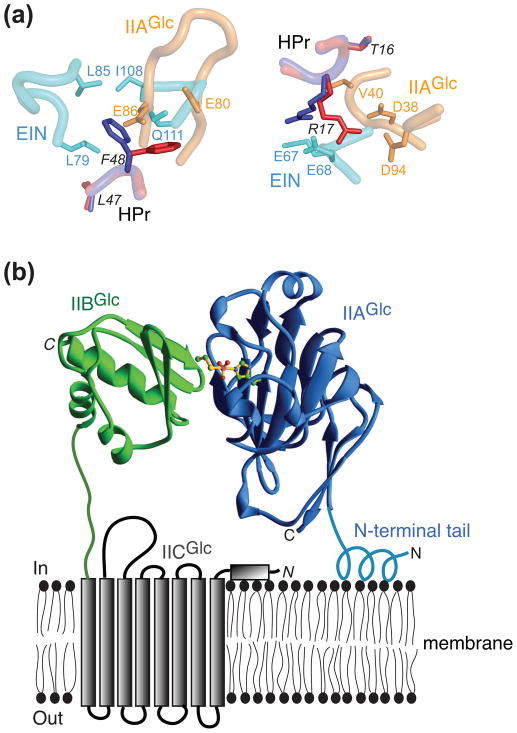Fig. 3.
Role of conformational side chain plasticity and membrane anchoring tails in protein complexes of the PTS. (a) Conformational side chain plasticity illustrated by complexes of HPr with EIN and IIAGlc. EIN is shown in cyan, IIAGlc in orange, HPr in the EIN-HPr complex in blue, and HPr in the IIAGlc-HPr complex in red. Residues of HPr are labeled in italics. Alternate conformations for Phe48 and Arg17 of HPr are illustrated in the left and right panels, respectively. Adapted from [47]. (b) Role of the N-terminal tail of IIAGlc in facilitating phosphotransfer to IIBCGlc. IIAGlc is shown in blue and residues 2–10 adopt a helical conformation upon interaction with the lipid bilayer of the bacterial cell membrane, thereby stabilizing the IIAGlc-IIBCGlc complex by partially anchoring IIAGlc to the lipid membrane. IIBGlc is shown in green, and a cartoon of the transmembrane IICGlc domain which includes eight transmembrane helices is shown in grey. Adapted from [19].

